- About AUP
- History of AUP
- Mission & Core Values
- Vision and Leadership
- AUP Recognition
- Alumni Success
- Campus Development
- Arts at AUP
- Policies & Guidelines
- Academics
- Undergraduate
- Graduate Programs
- MA in Diplomacy and International Law
- MA in Global Communications
- MSc in Human Rights and Data Science
- MA in International Affairs
- MA in International Affairs, Conflict Resolution, and Civil Society Development
- MSc in International Management
- MSc in Strategic Brand Management
- Find Your Thesis Advisor
- Previous Programs
- Cultural Program
- Faculty
- Summer School
- Research Centers
- The Center for Critical Democracy Studies
- Upcoming Events
- Research Projects
- Fellows’ Publications
- Publishing
- Curriculum
- Community
- Partnerships
- Visiting Scholars
- CCDS Highlights
- Atelier de Théorie Politique – Paris
- Critical Theory 101: Future Directions and New Challenges
- Martti Koskenniemi on “The Law of International Society: A Road not Taken”
- Academic Freedom Symposium
- Tocqueville Colloque 2023
- Violent Turns Conference
- Degenerations of Democracy
- DEMOS21 Inaugural Event
- What Demos for the 21st Century?
- The Paris Centennial Conference
- Justice Stephen Breyer
- Civic Jazz - The Launch of the Center
- Past Events
- FR
- The Center for Writers and Translators
- The George and Irina Schaeffer Center for the Study of Genocide, Human Rights and Conflict Prevention
- The Joy and Edward Frieman Environmental Science Center
- The Center for Media, Communication & Global Change
- The Center for Critical Democracy Studies
- Departments
- Academic Resources
- Academic Affairs
- Academic Calendar
- Academic Resource Center
- Library
- Registrar's Office
- Teaching and Learning Center
- Accessibility & Accommodation Services
- AI@AUP: A Campus-Level Initiative
- Quai D'Orsay Learning Commons
- Paris as Classroom
- ACE Center
- Admissions
- Student Life
- Campus
- Student Leadership & Involvement
- Paris
- Support Services
- Student Life Help Desk
- Student Accounting Services
- Student Immigration Services
- Student Grievance Procedure
- Diversity and Inclusion
- Health & Well-being
- Digital Student Handbook
- News
- Events
- AUP Giving
- Housing Offer for 2025-2026
- IT Services
- Alumni
- About AUP
- History of AUP
- Mission & Core Values
- Vision and Leadership
- AUP Recognition
- Alumni Success
- Campus Development
- Arts at AUP
- Policies & Guidelines
- Academics
- Undergraduate
- Graduate Programs
- MA in Diplomacy and International Law
- MA in Global Communications
- MSc in Human Rights and Data Science
- MA in International Affairs
- MA in International Affairs, Conflict Resolution, and Civil Society Development
- MSc in International Management
- MSc in Strategic Brand Management
- Find Your Thesis Advisor
- Previous Programs
- Cultural Program
- Faculty
- Summer School
- Research Centers
- The Center for Critical Democracy Studies
- Upcoming Events
- Research Projects
- Fellows’ Publications
- Publishing
- Curriculum
- Community
- Partnerships
- Visiting Scholars
- CCDS Highlights
- Atelier de Théorie Politique – Paris
- Critical Theory 101: Future Directions and New Challenges
- Martti Koskenniemi on “The Law of International Society: A Road not Taken”
- Academic Freedom Symposium
- Tocqueville Colloque 2023
- Violent Turns Conference
- Degenerations of Democracy
- DEMOS21 Inaugural Event
- What Demos for the 21st Century?
- The Paris Centennial Conference
- Justice Stephen Breyer
- Civic Jazz - The Launch of the Center
- Past Events
- FR
- The Center for Writers and Translators
- The George and Irina Schaeffer Center for the Study of Genocide, Human Rights and Conflict Prevention
- The Joy and Edward Frieman Environmental Science Center
- The Center for Media, Communication & Global Change
- The Center for Critical Democracy Studies
- Departments
- Academic Resources
- Academic Affairs
- Academic Calendar
- Academic Resource Center
- Library
- Registrar's Office
- Teaching and Learning Center
- Accessibility & Accommodation Services
- AI@AUP: A Campus-Level Initiative
- Quai D'Orsay Learning Commons
- Paris as Classroom
- ACE Center
- Admissions
- Student Life
- Campus
- Student Leadership & Involvement
- Paris
- Support Services
- Student Life Help Desk
- Student Accounting Services
- Student Immigration Services
- Student Grievance Procedure
- Diversity and Inclusion
- Health & Well-being
- Digital Student Handbook
- News
- Events
- AUP Giving
- Housing Offer for 2025-2026
- IT Services
- Alumni
- About AUP
- History of AUP
- Mission & Core Values
- Vision and Leadership
- AUP Recognition
- Alumni Success
- Campus Development
- Arts at AUP
- Policies & Guidelines
- Academics
- Undergraduate
- Graduate Programs
- MA in Diplomacy and International Law
- MA in Global Communications
- MSc in Human Rights and Data Science
- MA in International Affairs
- MA in International Affairs, Conflict Resolution, and Civil Society Development
- MSc in International Management
- MSc in Strategic Brand Management
- Find Your Thesis Advisor
- Previous Programs
- Cultural Program
- Faculty
- Summer School
- Research Centers
- The Center for Critical Democracy Studies
- Upcoming Events
- Research Projects
- Fellows’ Publications
- Publishing
- Curriculum
- Community
- Partnerships
- Visiting Scholars
- CCDS Highlights
- Atelier de Théorie Politique – Paris
- Critical Theory 101: Future Directions and New Challenges
- Martti Koskenniemi on “The Law of International Society: A Road not Taken”
- Academic Freedom Symposium
- Tocqueville Colloque 2023
- Violent Turns Conference
- Degenerations of Democracy
- DEMOS21 Inaugural Event
- What Demos for the 21st Century?
- The Paris Centennial Conference
- Justice Stephen Breyer
- Civic Jazz - The Launch of the Center
- Past Events
- FR
- The Center for Writers and Translators
- The George and Irina Schaeffer Center for the Study of Genocide, Human Rights and Conflict Prevention
- The Joy and Edward Frieman Environmental Science Center
- The Center for Media, Communication & Global Change
- The Center for Critical Democracy Studies
- Departments
- Academic Resources
- Academic Affairs
- Academic Calendar
- Academic Resource Center
- Library
- Registrar's Office
- Teaching and Learning Center
- Accessibility & Accommodation Services
- AI@AUP: A Campus-Level Initiative
- Quai D'Orsay Learning Commons
- Paris as Classroom
- ACE Center
- Admissions
- Student Life
- Campus
- Student Leadership & Involvement
- Paris
- Support Services
- Student Life Help Desk
- Student Accounting Services
- Student Immigration Services
- Student Grievance Procedure
- Diversity and Inclusion
- Health & Well-being
- Digital Student Handbook
- News
- Events
- AUP Giving
- Housing Offer for 2025-2026
- IT Services
- Alumni
AUP History
AUP History Timeline
Home>About AUP>History of AUP>
The American College in Paris was founded in 1962. Follow along through 60 years of history, to discover the key moments that shaped our global community and established AUP as a hub of engaged scholarship and liberal arts learning on the banks of the Seine.
Know of an event in AUP history that you think you should be added to this timeline? Please email communications![]() aup.edu.
aup.edu.
1962
Founder Dr. Lloyd A. DeLamater signs the ACP charter on March 27, 1962, inaugurating the American College in Paris as the first American institution of higher learning in the City of Light.
Students study subjects such as art history, science and English literature in rented classrooms in the American Church in Paris, located on the Quai d’Orsay in the 7th arrondissement on the banks of the Seine.
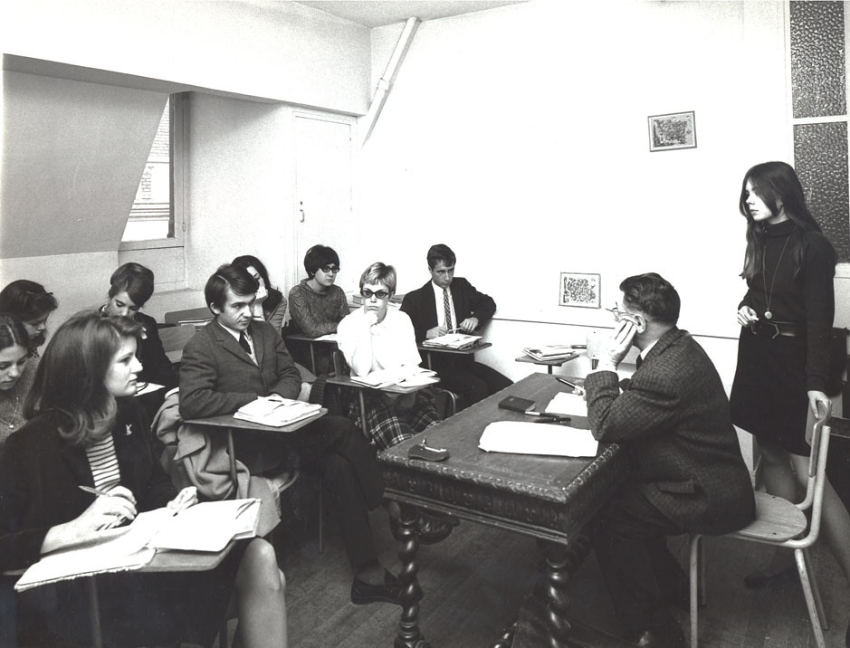
Marie DeLamater and Walter J. Brennan establish the Cultural Program, designed to act as an introduction to European culture and global perspectives. Students attend trips to museums, performances and cultural sites across France, and study trips even go as far afield as Italy, China and the Soviet Union.
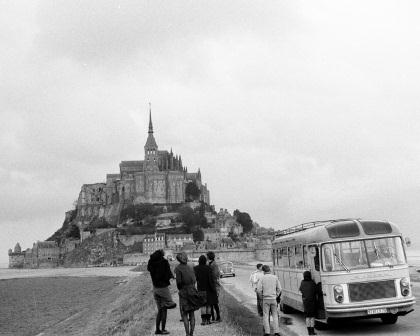
Students quickly form the first student-run organization at ACP, the Student Council, in the fall of 1962. Jim Overton ’64 is voted its first President.
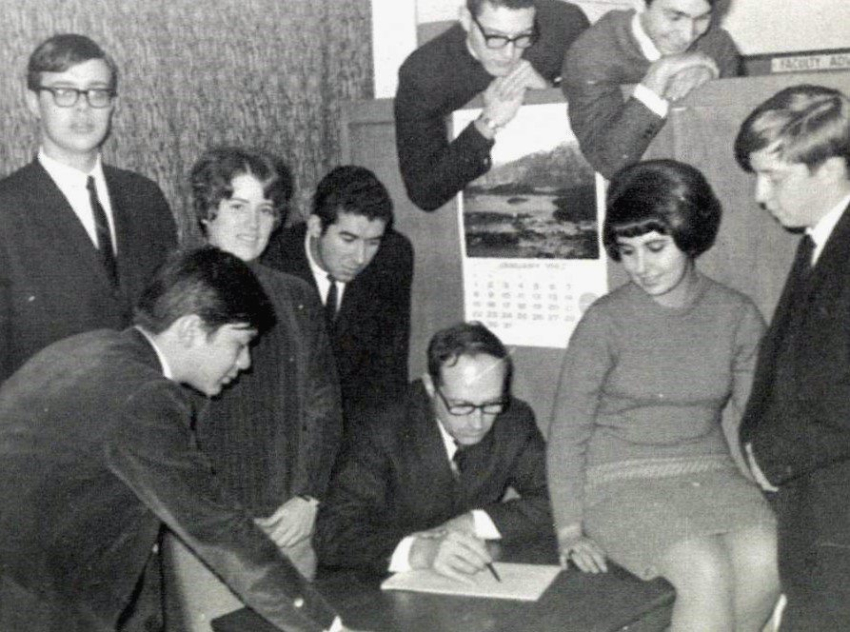
1963
A CBS News report on American students in Paris immortalizes the University’s early days, exploring students’ perspectives on French culture, language and daily life. You can view archive footage of the news report online.
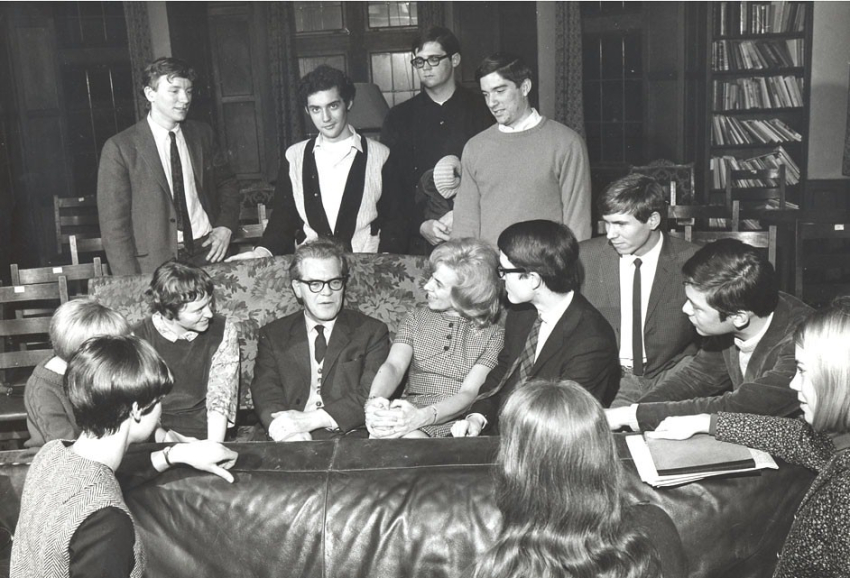
1964
Forty students received their two-year diplomas, before transferring to US universities to finish their undergraduate degrees.
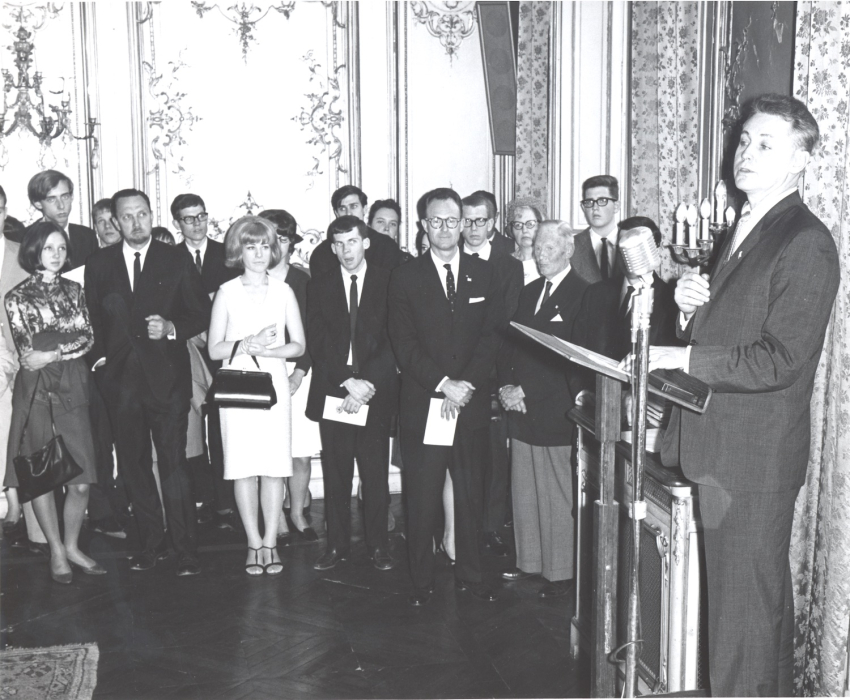
1968
May ’68 lives on in history as a time of protest and activism in the Parisian student community and across the world.
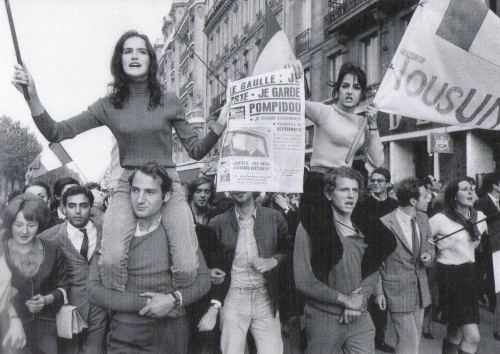
1969
AUP's first-ever literary publication, Fugue, was published in the Spring of 1969. The editorial team worked out of the crowded basement of the American Church in Paris. Several faculty members also contributed to the magazine.
1971
ACP first rents the former hôtel particulier at 31, avenue Bosquet as its primary headquarters. The University will formally purchase the building in 2001, before eventually selling it in 2012.

1973
ACP receives accreditation from the Middle States Commission on Higher Education, a status which it has held continuously since 1973. The latest reaccreditation certification was achieved in 2020.
1974
The “automatic typewriter” was awarded to the Department of Business and Economics, and was affectionately given the name “Gloria.”

The American College in Paris is accredited as a four-year, degree-granting college, offering a variety of liberal arts majors and minors to students wishing to study in Paris.
1979
Initially born out of a student economics project, L’American Express Café found its home in the Bosquet building. Managed by students, this “coffee house with no coffee” offered a selection of snacks, sandwiches and beers, as well as a DJ playing the hottest hits on cassette.

Long-running student newsletter The Planet started life as a bulletin in the Office of Communications, which published its first issue on September 27, 1977. Two years later, and The Planet took its place as a student-run publication, replacing the existing paper Sans Culottes. It would continue publishing until its final issue in October 2011.
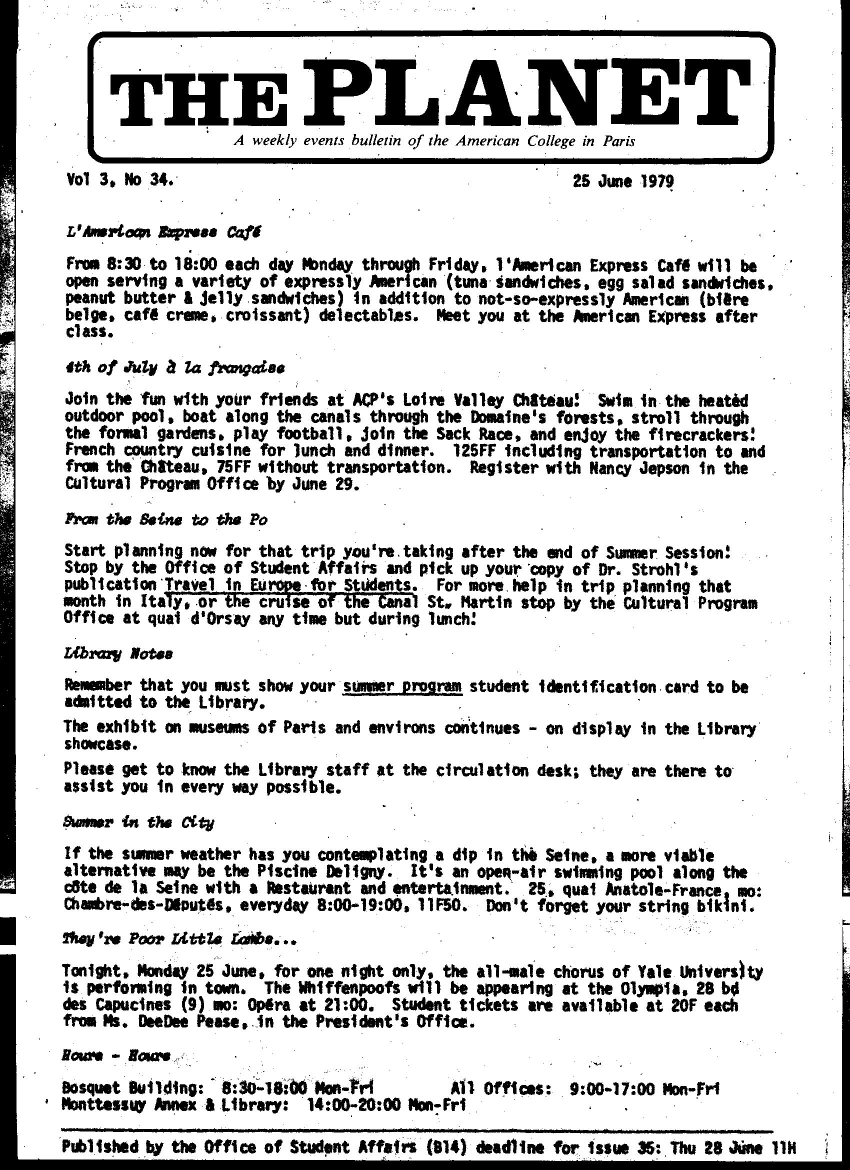
1981
The two institutions collaborate to allow 35 students to study at ACP and receive BFA degrees from Parsons School of Design. The following year, 103 students benefit from the program.
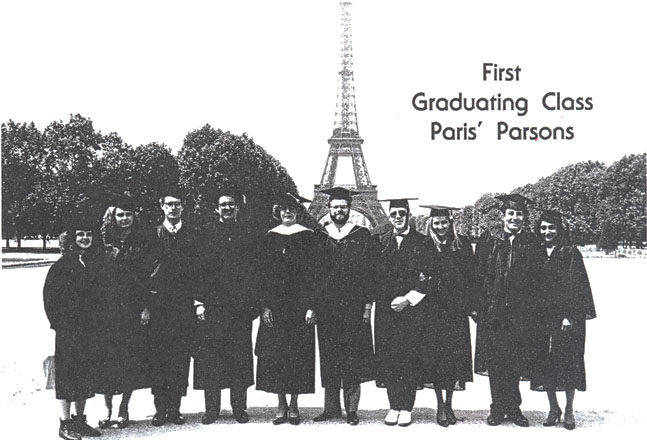
1982
Student-run literary and creative arts journal Paris/Atlantic publishes its first issue in Fall semester 1982. The journal is still active today, making it the longest-running student publication currently in production.
Then Dean of Students Steve Plummer and Director of Computer Services Jamie Gilroy help develop Service Calvados, France’s first major online service, which allowed users to run several programming languages, send electronic messages, and distribute commercial software. Calvados, named in honor of its target audience of Apple computer users running disk operating system (DOS) version 3.3, introduced a cohort of French digital pioneers to cyberspace.

1987
Students host what would become an annual food event and an integral part of the AUP calendar. Participants share recipes from their home countries in a University-wide potluck.

1988
The American College in Paris officially becomes The American University of Paris, reflecting the evolving nature of its rigorous liberal arts degree offering. The change from “in” to “of” represented the intrinsic nature of an international education to the AUP experience. Paris was more than a geographic location; it was part of the curriculum itself.
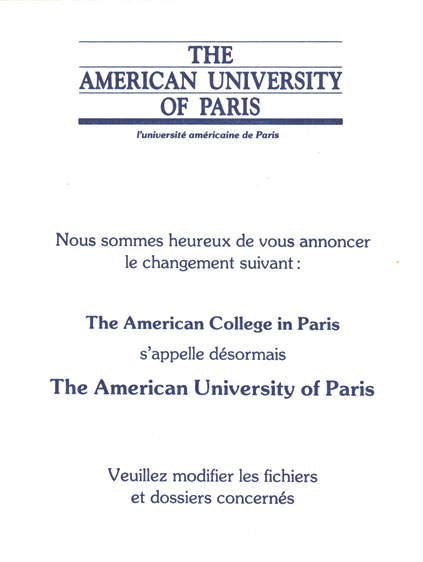
1990
The building is constructed on land leased from the Église Saint–Jean. Today officially called the Grenelle Teaching and Mentoring Center, the building remains an important fixture of AUP’s campus.
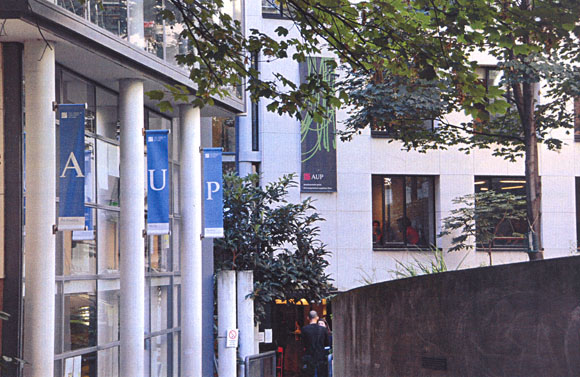
1992
Students and faculty protest the proposal to move the AMEX to the St. Dominique building, ultimately leading to the café keeping its home in Bosquet.
1996
The AUP website appears for the first time, as the University establishes a presence in the emerging online world.

1997
White Mask organizes annual performances of plays and musicals performed and sometimes written by AUP students and alumni. Memorable shows include Grease, Chicago, and Guys and Dolls. The club remains active until the late 2010s.
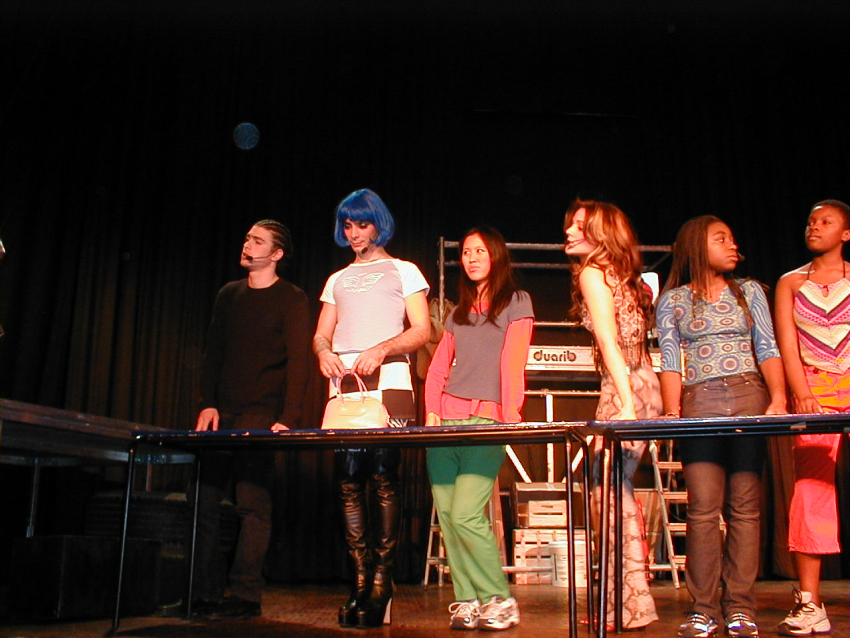
1999
AUP’s campus expands with a new building at 6, rue du Colonel Combes. The building would be officially purchased in 2009.
2001
For the first time, students from 100 different nationalities are enrolled in a single semester.
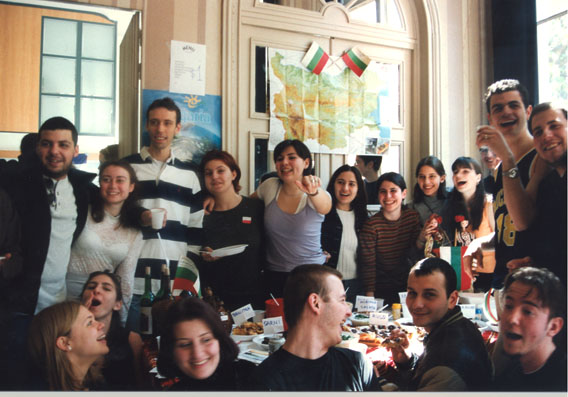
2002
The Academic Resource Center opened its doors in the 2002–03 academic year, offering peer-tutoring programs such as the Writing Lab, as well as support for 21st-century learning technologies. The ARC remains a valuable source of academic support at AUP today.
2004
The American International Consortium of Academic Libraries (AMICAL) works to advance learning, teaching and research by working collaboratively among library and information services at American international institutions. It was founded at AUP in 2004.
2005
Located in the lobby of the Combes Student Life Center, the AUP Fine Arts Gallery has now hosted exhibitions by artists and AUP faculty and students for over 15 years. Professor Ralph Petty was the gallery’s first curator, a role today continued by Professor Jonathan Shimony.

The MA in International Affairs, Conflict Resolution and International Solidarity, a joint master’s with the Institut Catholique de Paris, is the first graduate program offered. Today, the University offers six graduate programs and hosts over 100 graduate students.
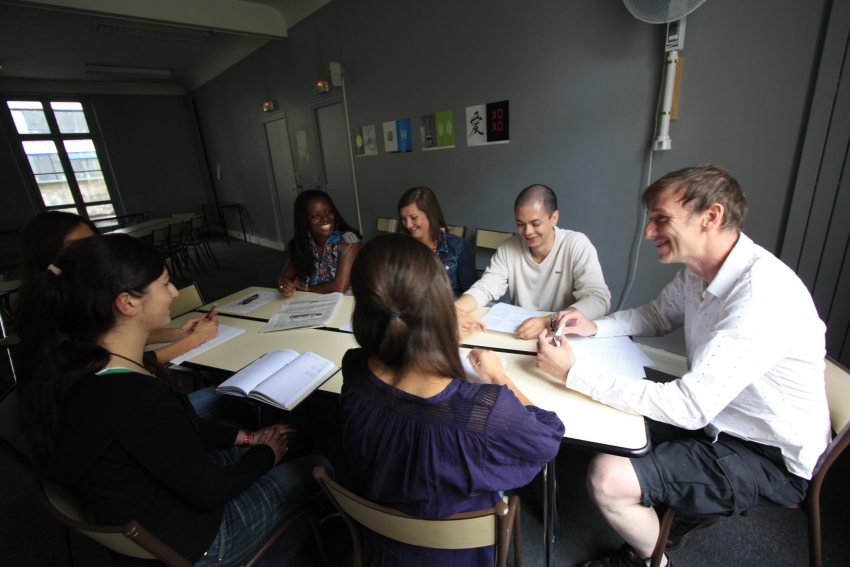
2006
AUP’s longest-running master’s program, the MA in Global Communications, first welcomes an incoming class of 18 students in Fall semester 2006.

2007
The Student Government Association is restructured to included master’s student representatives as part of its executive branch.
The Center for Writers & Translators, known as CWT, is founded in the Department of Comparative Literature and English in Spring semester 2007. Four other research centers will be created in the following years: The Joy and Edward Frieman Environmental Science Center (Spring 2014), the Center for Critical Democracy Studies (Fall 2015), the George and Irina Schaeffer Center for the Study of Genocide, Human Rights and Conflict Prevention (Fall 2016) and the Civic Media Lab (Fall 2017).

2008
Celeste M. Schenck becomes AUP President, having previously served as Provost and a professor of comparative English. Her 13-year tenure will come to define a key period of growth and evaluation, carrying the University into a new era.

The Sustainable Development Practicum in Auroville, India, takes place for the first time. Students attend workshops and gain vital work experience with NGOs and cultural associations in the experimental township.
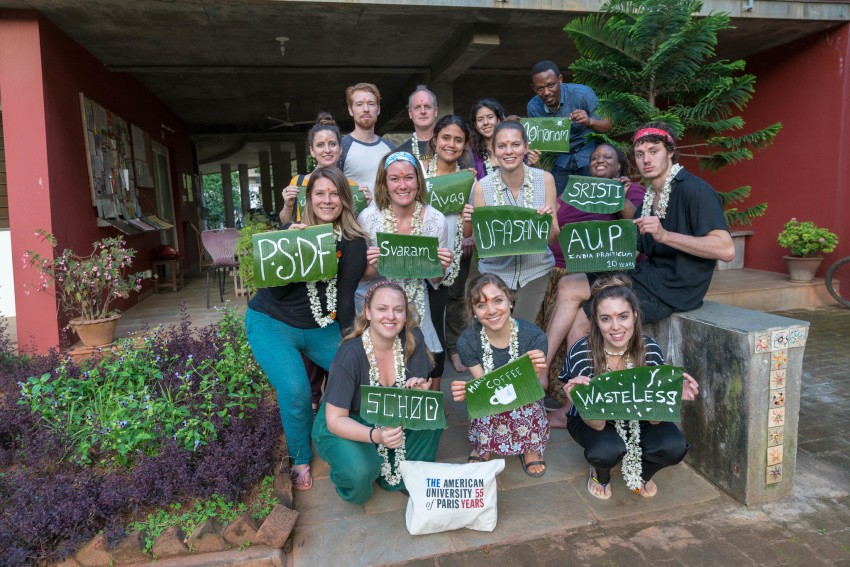
The AUP Board of Trustees votes to stay in the 7th arrondissement rather than move locations to a new campus outside of Paris intra-muros, thus cementing the University’s position on a consolidated campus in the quartier of its founding.
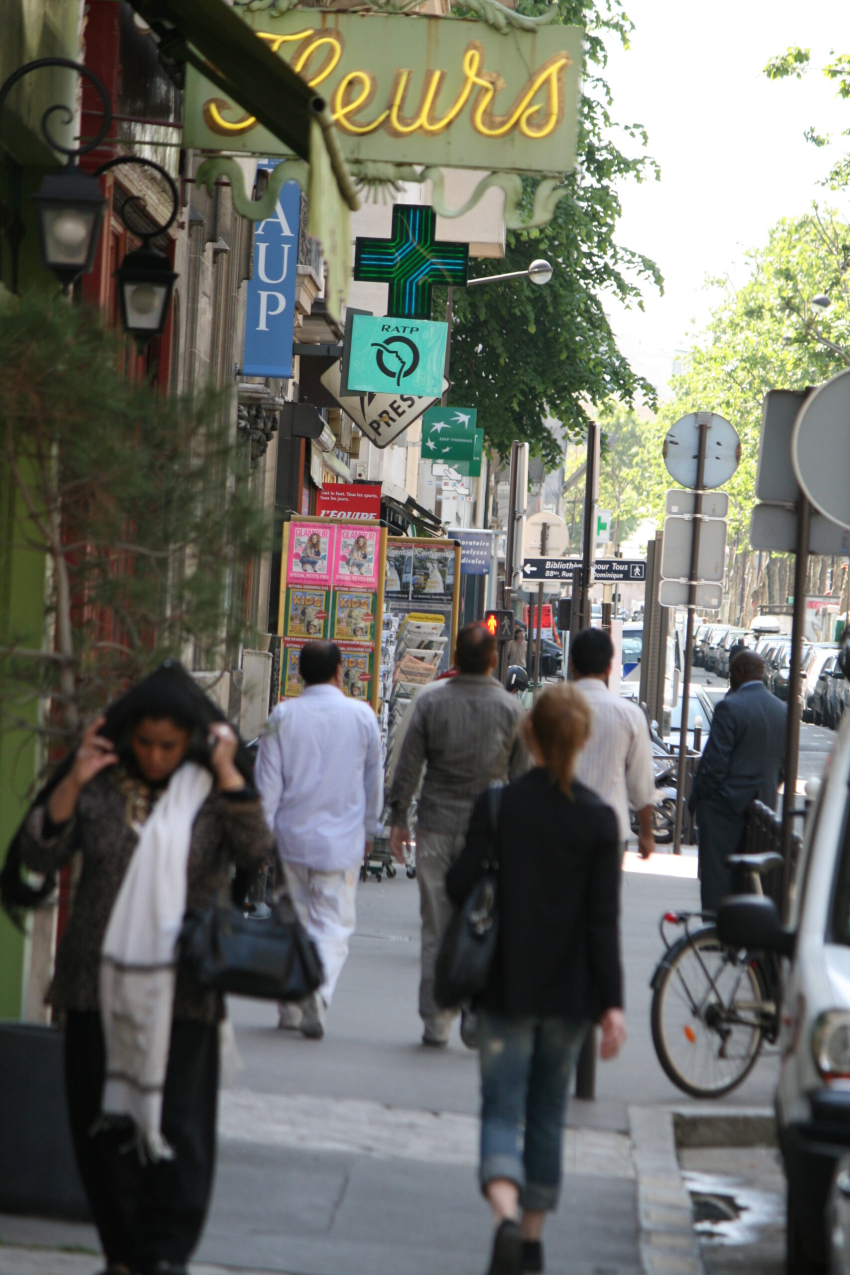
Fashion mogul Calvin Klein delivers a lecture on his remarkable vision of fashion branding to the AUP community in the Combes Grands Salons on September 19, 2008.
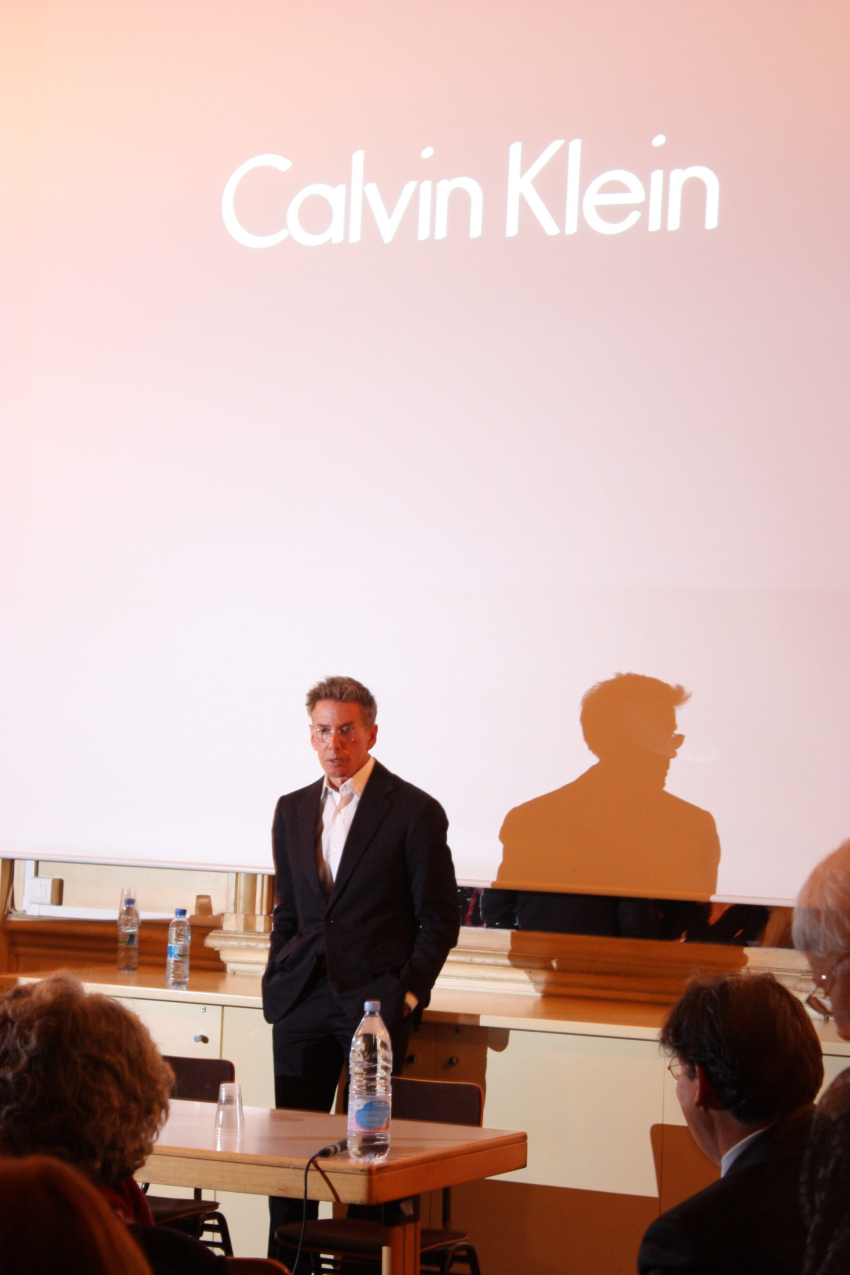
2011
Then-student Ford Leland ’13 launches Peacock Media with a guerilla marketing campaign during the University’s Thanksgiving dinner, thus changing the face of AUP Student Media in the coming decade.
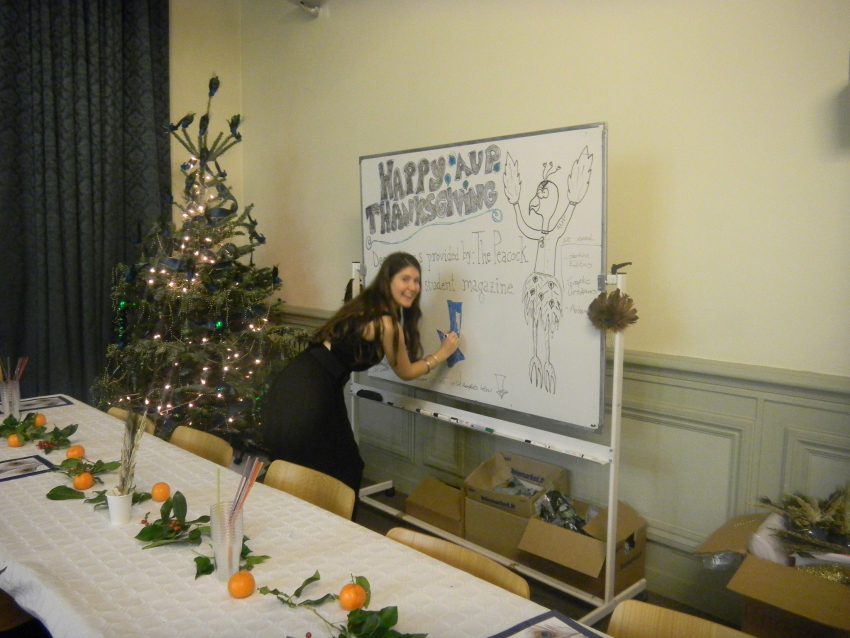
2012
Alumni gather in Paris and across the world to mark a half-century of an American education in the City of Light. AUP unveils a new logo, designed by alumna Anne Ditmeyer G’10, as part of the celebrations.
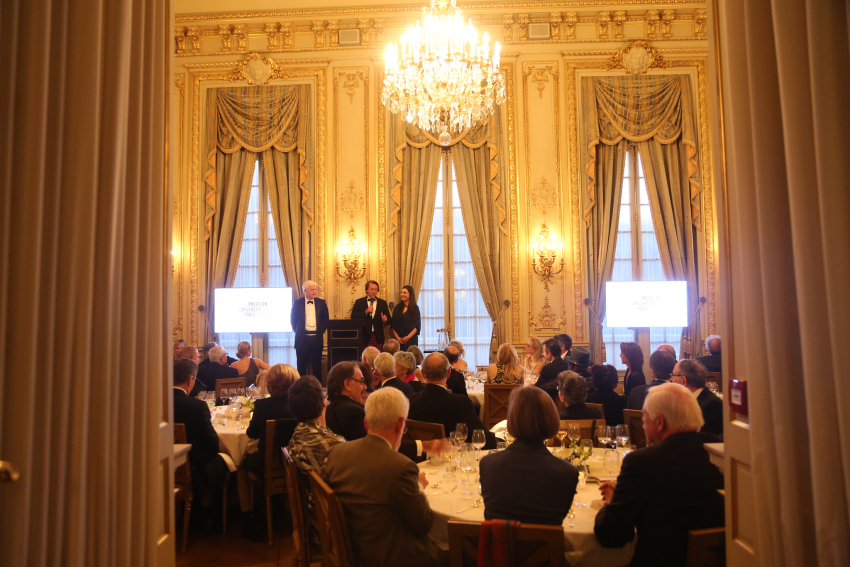
2013
Former Iron Maiden front man Blaze Bayley performed a private concert for students, staff and faculty at the AMEX Café in Bosquet.
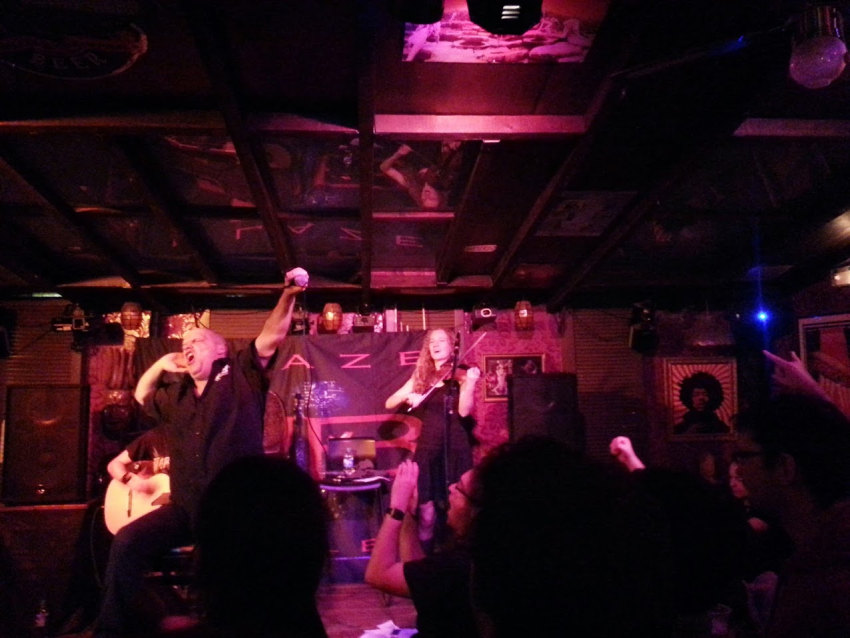
2014
At an event hosted in the American Church in Paris, primatologist Jane Goodall gives a lecture to the AUP community.
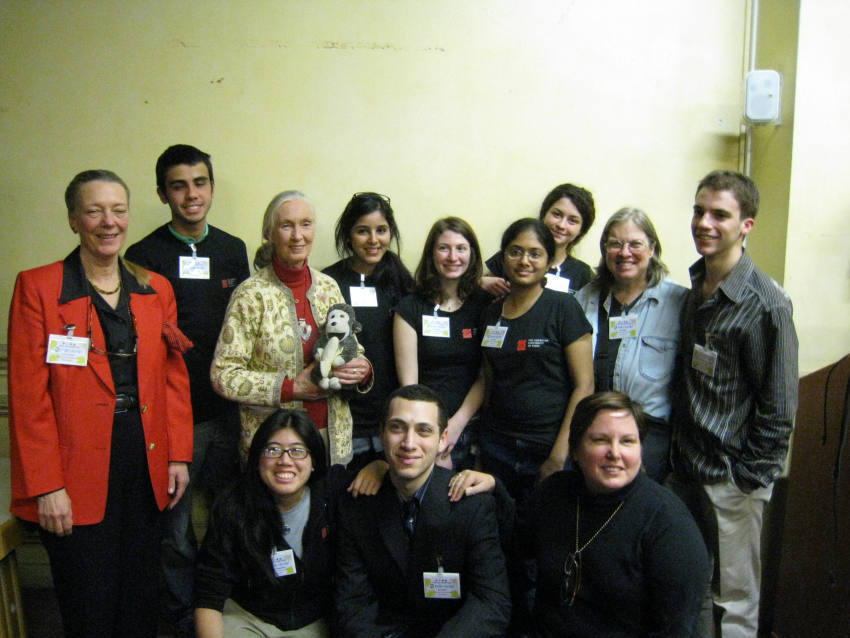
AUP’s Leadership Team develops the term “global explorer” to describe the kind of internationally minded student that the University seeks to attract.
The first step in an ongoing campus renovation plan sees Combes become the Combes Student Life Center. Following the sale of the Bosquet building, the AMEX Café finds its new home on the ground floor, next to the lobby.
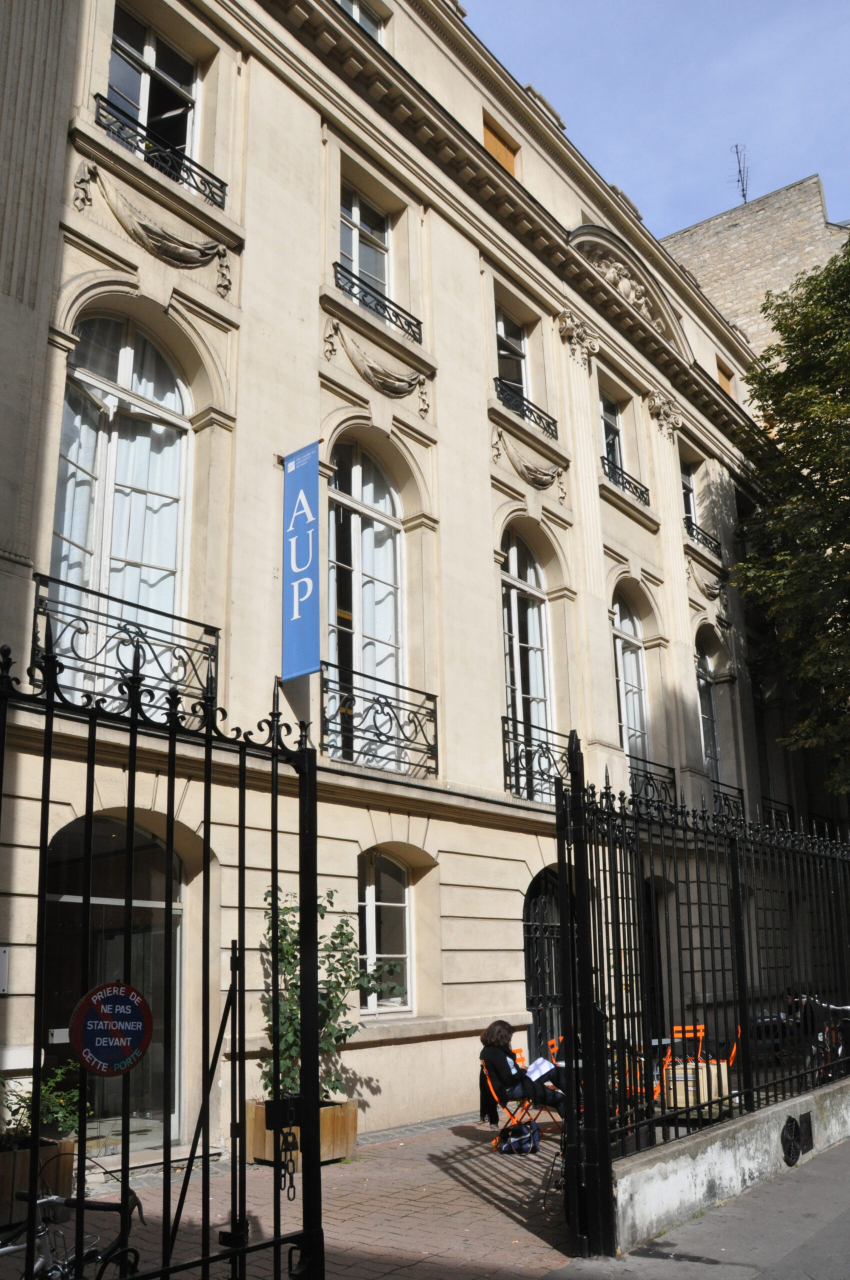
2015
AUP Ascending focuses primarily on the renovation of AUP’s campus into a consolidated hub of engaged scholarship in Paris’s 7th arrondissement, as well as the recruitment of students in the model of the global explorer. The plan also includes the University’s first-ever capital campaign, also called AUP Ascending.
2017
The GPS Program is a co-curricular initiative that encourages students to make deliberate decisions about their personal and professional pathways through higher education. It provides a holistic approach to a student’s time at university and integrates staff and faculty advising throughout.
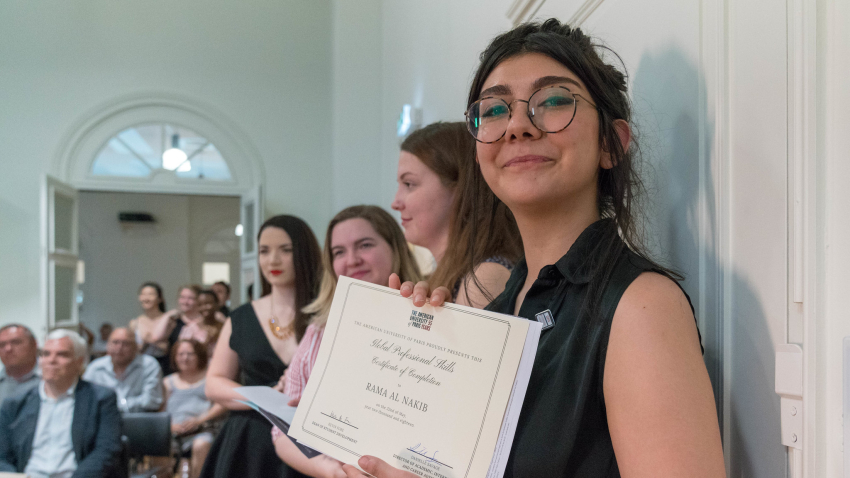
2019
AUP’s new flagship building opens after two years of renovations, providing a vibrant hub of engaged scholarship on the banks of the Seine, only a few doors down from where it all began at the American Church in Paris.

The Center for Critical Democracy Studies (CCDS) cohosts, along with the Belfer Center at Harvard Kennedy School, the Paris Centennial Conference, marking 100 years since the signing of the Treaty of Versailles. It is the largest academic convocation in AUP’s history.

2020
The worldwide Covid-19 pandemic causes seismic shifts in higher education. AUP goes remote, moving to teaching fully online in just a matter of weeks. Classes are attended remotely by students in lockdown across the world.

Following the success of the AUP Ascending Campaign, a new Strategic Plan, Navigating 21st-Century Pathways 2020–2023, is developed, focusing primarily on the evolution of the AUP curriculum and navigating the challenges of the global pandemic.
2021
The new hub of artistic endeavor on campus at 9, rue de Monttessuy aims to open in late 2021, and will include renovated classrooms, studio spaces and AUP’s first-ever theater, named for Olivia de Havilland.
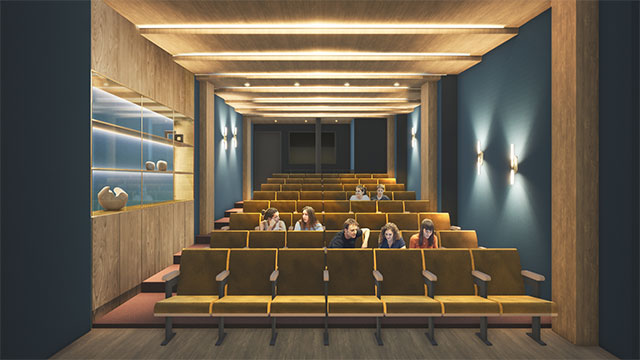
Campus reopens in time for AUP to celebrate 60 years of its diverse, international community of dedicated scholars and researchers in Paris. A new logo, developed in collaboration with the AUP community, is unveiled.
The redesigned logo builds on AUP’s strong brand identity and was developed in cooperation with constituents from across the University’s global community.
2022
Following a rigorous international search, Professor Sonya Stephens was appointed by the Board of Trustees, replacing outgoing President Celeste M. Schenck.
The Class of 2022 were joined by the Classes of 2021 and 2020—who were previously unable to graduate in person due to pandemic restrictions—to walk across the stage at the Théâtre du Châtelet and celebrate their collective achievements.
2023
AUP announced the creation of a new Emeriti Board dedicated to representing the interests of all retired colleagues, both former faculty and staff.
AUP re-examines its efforts to welcome incoming first years, creating a holistic year-long experience designed to foster community and set new students up for success.
